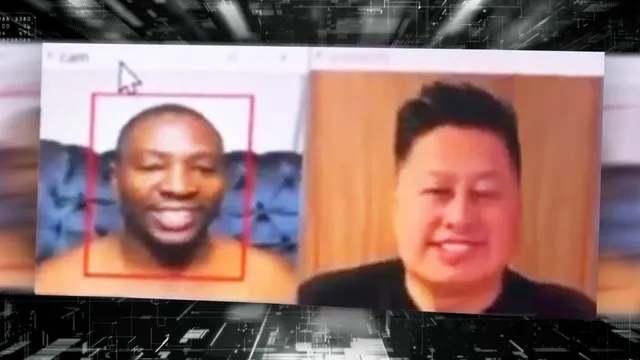
Scammers exploit face-swapping technology to carry out fraud
2025-02-28 20:18- Face-swapping and voice-cloning technologies enable realistic impersonations during online interactions.
- Scammers share techniques and experiences among groups to enhance their fraudulent operations.
- The rise of technology in scams highlights the need for awareness and preventive measures among consumers.
Express your sentiment!
Insights
In recent months, advances in technology have empowered scammers with sophisticated tools for online fraud. For example, face-swapping and voice-cloning technologies have revolutionized the way perpetrators can deceive victims. Such tools allow scammers to conduct realistic video calls where their appearance can be altered, making it difficult for victims to recognize the fraud. These scammers frequently operate in groups, sharing tactics and knowledge about exploiting these technologies, which increases their credibility among peers and effectively enhances their fraudulent activities. The usage of deepfake technologies has grown alarmingly and has led to widespread victimization across various demographics. In the UK alone, polling from Hiya indicates that 26 percent of consumers reported receiving deepfake voice calls over the past year. The ongoing scam landscape is not limited to romance schemes; scammers employ these technologies to impersonate individuals, including CEOs, in schemes designed to misappropriate funds, such as impersonating high-ranking officials to defraud companies and facilitate extortion. Moreover, these activities are often linked to larger criminal operations that span across borders. Investigators have uncovered connections between online scams and serious crimes, including human trafficking and arms dealings. Countries such as Nigeria have been particularly noted for hosting networks of fraudsters. This highlights the complex, dynamic nature of scams where technology evolves, allowing criminals to adapt to new challenges posed by law enforcement and cybersecurity measures. The various implications of this emerging type of fraud extend beyond financial theft, as they intertwine with organized crime and international syndicates. The landscape of scams is rapidly changing, which raises concerns about the adequacy of safeguards and prevention mechanisms. With an estimated 72 to 73 percent of scams linked to overseas actors, the international nature of this threat exacerbates the situation, making it imperative for both consumers and authorities to stay informed and vigilant against these elaborate schemes.
Contexts
The emergence of deepfake technology has significantly impacted various sectors, particularly in the realm of security. Deepfake technology leverages advanced artificial intelligence algorithms to create hyper-realistic fake videos and audio recordings by manipulating existing content. These manipulations pose serious threats to national security, corporate integrity, and personal privacy. Cybercriminals and malicious actors can exploit deepfake technology to conduct espionage, disseminate misinformation, and orchestrate fraud schemes. The ease with which individuals can create and share deepfakes increases the likelihood of their use in attempts to undermine public trust in media and institutions, potentially leading to political instability and social division. One of the most alarming implications of deepfake technology is its potential for misinformation campaigns. As seen in recent electoral processes globally, the ability to fabricate a video of a public figure making inflammatory remarks can sway public opinion and influence electoral outcomes. Such instances can erode democratic processes and manipulate the information landscape, leading to a profoundly divided society. The cybersecurity landscape is not immune to these threats; deepfakes can be weaponized to execute social engineering attacks, using fabricated identities to gain unauthorized access to sensitive information or systems. Moreover, deepfake technology presents challenges for law enforcement and intelligence agencies tasked with countering deceitful narratives and protecting national security. As deepfake detection technologies emerge, the race between creating compelling deepfakes and developing tools to identify them continues. This adversarial dynamic requires ongoing investment in both detection technology and public awareness campaigns to educate individuals about the existence and risks of deepfakes. Failure to address these challenges adequately could result in significant consequences for societal trust and global stability. In conclusion, while deepfake technology holds potential for innovation and creative expression, its malign use raises urgent security concerns that must be urgently addressed. Policymakers, tech companies, and civil society must collaborate to develop strategies that preemptively mitigate the risks posed by deepfake technology. This includes creating robust regulations, fostering technological solutions for deepfake detection, and enhancing public education about media literacy to minimize susceptibility to manipulation. The challenge of deepfake technology is a complex interplay of technological advancement and societal responsibility that must be navigated carefully as we move forward.